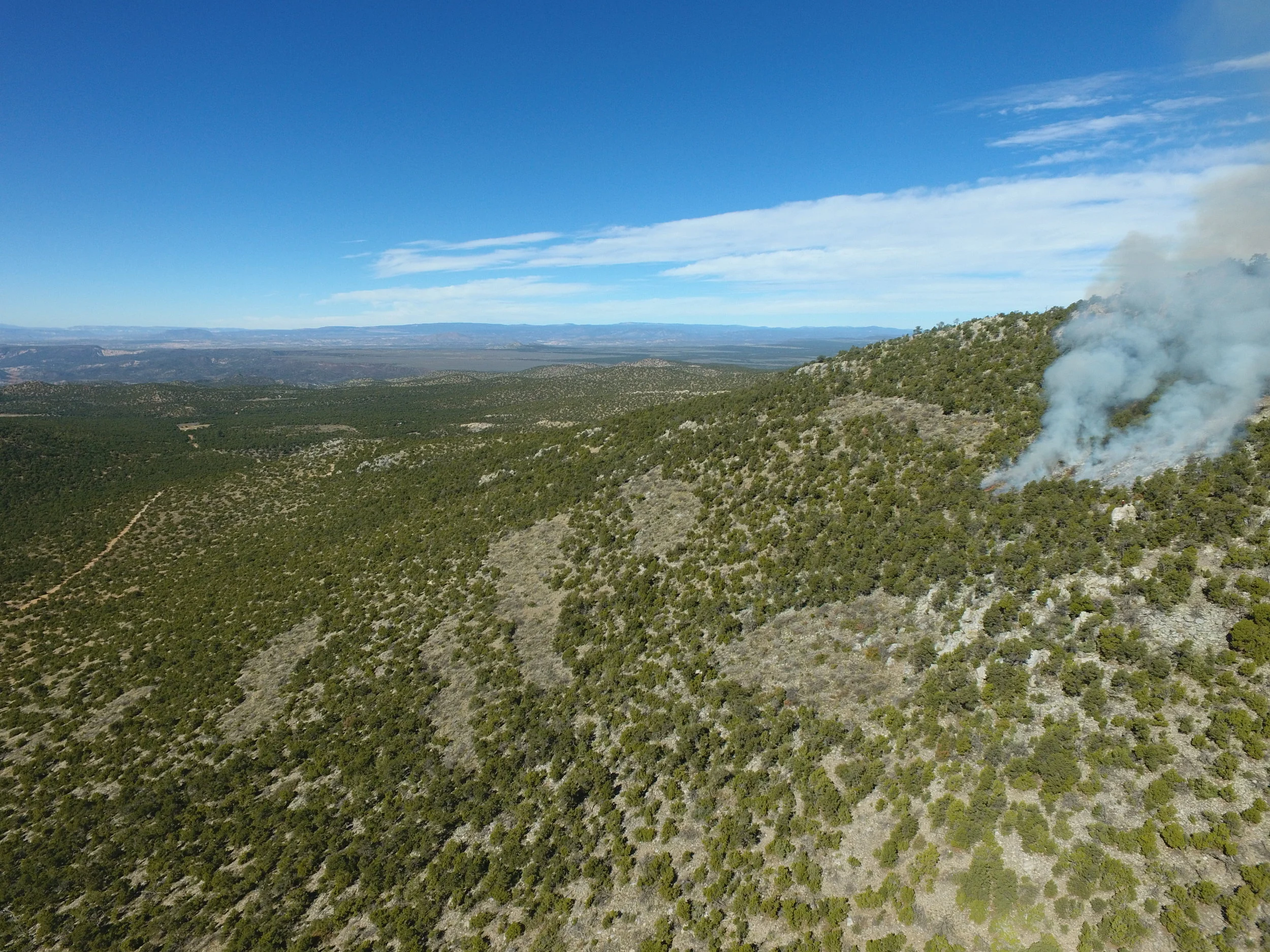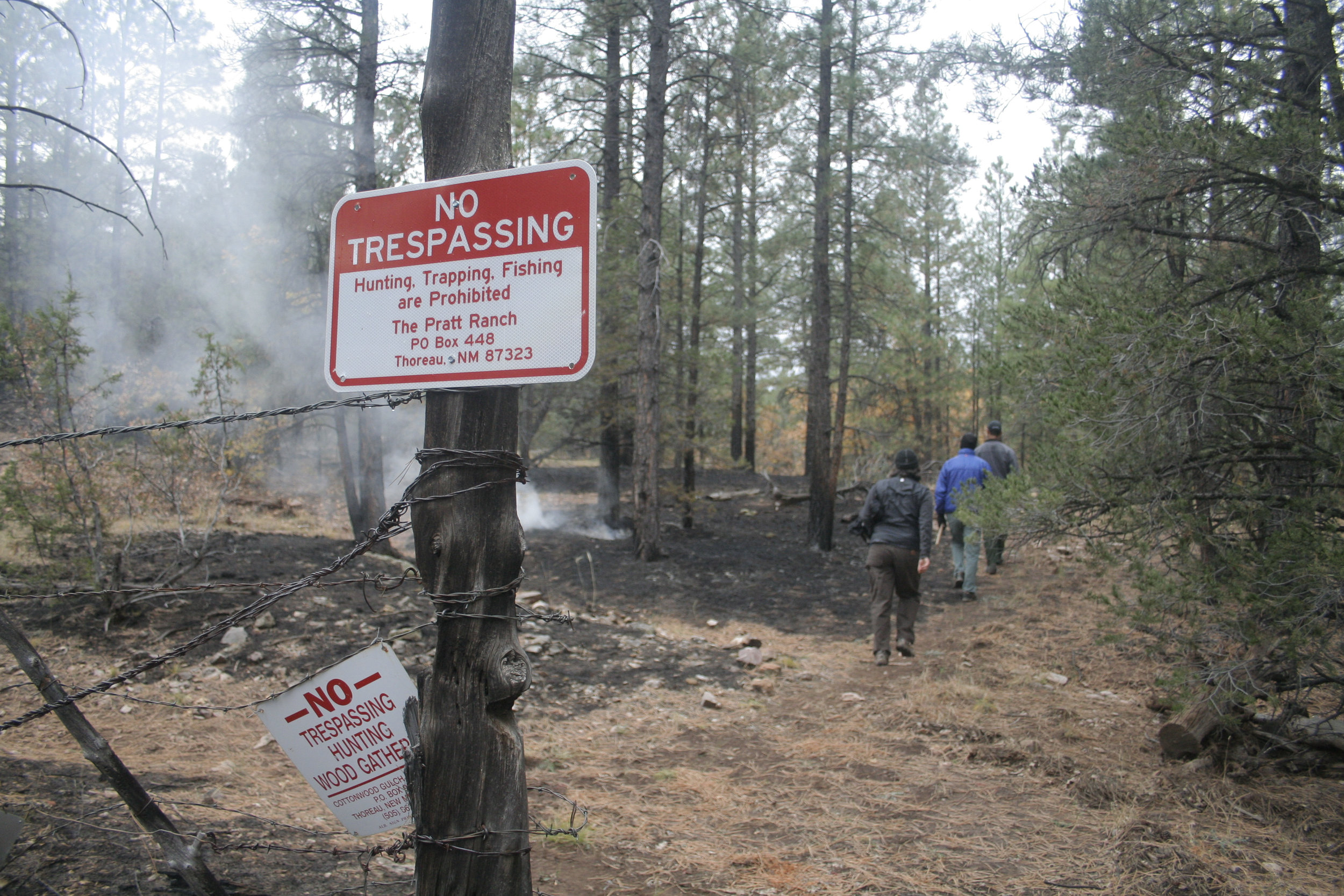“Using this fancy tool – it’s a clinometer – we know the trees here are about 40 to 50 feet tall,” Lawrence says.
The crew members share the data they’re collecting with Shawnee, a recent agriculture economics and business administration graduate of New Mexico State University. With her five years of YCC summer experience, Shawnee is the crew trainer this year. She wears an official forester’s vest and carries a clipboard, while representing the fulfillment of one of the goals of the program: to interest young people in conservation education and careers in the organizations serving a conservation mission.
“Our focus is on high school-aged youth,” says Eytan Krasilovsky, Forest Stewards Guild’s Southwestern director. “We work in partnership with the Forest Service with the goal to provide employment, education, and conservation work in New Mexico’s forests and watersheds. The program helps give kids skills so they can continue their education and possibly work with organizations like the USFS, BLM, and BIA.”
Krasilovsky has worked with the Santa Fe-based Forest Stewards Guild for 11 years. He’s one of many education experts who lead the youth crews in the variety of projects they tackle each summer. The USFS also provides specialists in streams, wildlife, forestry, fire, and range resources, and the crews’ projects include maintaining campgrounds, building trails, and habitat restoration.
The El Rito crew recently spent a week pulling down older barbed wire fences and replacing them with wildlife-friendly fences without barbs on the top and bottom wires. “Putting in new fencing keeps the cows in the right area, while the new wildlife-friendly fences allow deer and elk to access water cisterns without getting snagged,” Krasilovsky says. He also describes a water catchment system, built from steel roofing and covered to slow evaporation, that serves wildlife in low-water areas surrounded with this new fencing.
Recent Mesa Vista High School graduate Raelynn says the fencing project was her favorite so far. “I like the hard work,” she says, “and the hiking into the timber plot project is killing us.”
Lora Arciniega, silviculturist for El Rito ranger district, is the Forest Service specialist helping the crew collect data from timber plots this week. The crew learns to find previously plotted areas with GPS trackers and compass points and often treks over a couple miles of rough terrain into the woods.
“This week, we’ve taken readings from about 15 sample plots from a larger inventory,” Arciniega says. “I’ll enter the information into a USFS database to give us overall current conditions of the forest health.”
At the next plot, 16-year-old Marcos bores a narrow hole into a healthy medium-sized ponderosa to take another reading on the resilience of the forest. With the increment bore, he extracts a wood core that shows the tree’s growth and age. Marcos marks 10-year increments on the core with a ballpoint pen. “It’s about 70 years old,” he says, as the group examines the past decade of rings, which are close together compared with other decades.
“Even though this area was pre-commercially thinned and logged within the last 10 years, it’s still not doing too good,” Arciniega says. “There’s room for treatment.”
The crew from El Rito will prepare the area for fire crews to perform prescribed burning later in the year by flagging the boundaries.
Forest restoration and resilience affect all the entities present, from the Forest Service to the youths who call El Rito home. Besides learning leadership and forestry skills, the YCC crew is making a difference in their community.














